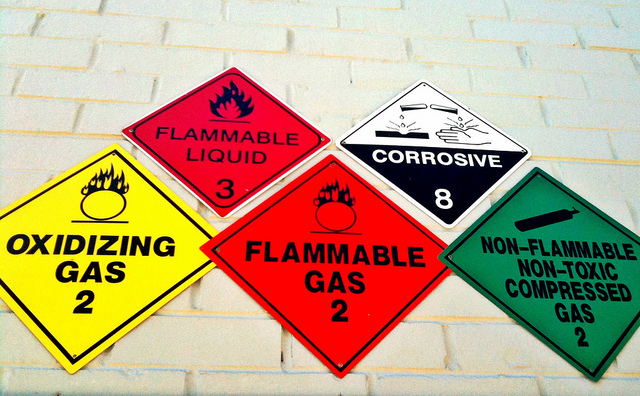In an effort to reduce “significant risk to public safety,” the U.S. Department of Transportation (DOT) now proposes to establish a new Commercial Driver’s License Drug and Alcohol Clearinghouse for drug and alcohol test results for drivers operating under a commercial driver’s license (CDL). The clearinghouse would also track traffic citations for driving while under the influence of alcohol or drugs (DUIs).
Audit, Compliance and Risk Blog
U.S. Transportation Safety—A Drug and Alcohol Clearinghouse?
Posted by STP Editorial Team on Wed, Mar 26, 2014
Tags: Business & Legal, Employer Best Practices, Health & Safety, Employee Rights, Training, EHS, Transportation
We’re still a long way from the paperless office, but the paperless cab may be upon us. The Federal Motor Carrier Safety Administration (FMCSA) recently adopted a new rule that requires drivers of interstate commercial buses and trucks to record their hours using electronic logging devices (ELDs). According to the administration, widespread use of these devices, also known as electronic onboard recorders, will reduce hours-of-service violations by hampering efforts to misrepresent time put in on the job—and that reduction will result in fewer crashes and fatalities.
Tags: Corporate Governance, Business & Legal, Employer Best Practices, Health & Safety, Employee Rights, Training, EHS, Transportation
When you think of dangerous industries to work in, which ones come to mind? Construction, mining, longshoring, maybe even letter carrying, are obvious, but did healthcare make the list?
Tags: Employer Best Practices, Health & Safety, OSHA, Employee Rights, Training, EHS, Workplace violence
Effective Control of Hazardous Energy (LOTO) — What You Need to Know to Ensure Compliance
Posted by Melanie Powers on Mon, Jan 20, 2014
Specialty Technical Consultants
Free Webinar
Date: Wednesday, January 29, 2014
Time: 2:00 PM - 3:00 PM EDT
Free! All are welcome
Tags: Employer Best Practices, Health & Safety, Employee Rights, Training, EHS, Hazcom, STC, Webinar
In response to what it describes as “an alarming increase” in worksite injuries and fatalities related to communication tower activities, the federal Occupational Safety & Health Administration (OSHA) recently issued a memorandum for regional administrators. Intensified upgrades to cellular infrastructure (to cite an example from a few years ago, preparation to introduce 3G service) are likely contributing to the toll: 14 incidents in just a few months of 2013, a total greater than that of the previous two years combined.
Tags: Employer Best Practices, Health & Safety, OSHA, Employee Rights, California Legislation, Training
OSHA: Is It Time To Update The Process Safety Management Standard?
Posted by Jon Elliott on Thu, Jan 09, 2014
The Occupational Safety and Health Administration’s (OSHA’s) Standard for Process Safety Management of Highly Hazardous Chemicals (usually referred to as “PSM”) in 1992, requires extensive risk assessments and reduction efforts by facilities where a significant incident involving these chemicals might have catastrophic consequences. OSHA adopted PSM in 1992, and has made only minor technical revisions in the ensuing two decades. However, several federal and state initiatives are developing recommendations and may lead to significant changes in 2014.
Tags: Employer Best Practices, Health & Safety, OSHA, Training, Environmental, EHS, Hazcom
December 1, 2013 marked the first major compliance deadlines for most employers to comply with revisions to the Occupational Safety and Health Administration's (OSHA's) Hazard Communication Standard (HCS or Hazcom) adopted by OSHA effective May 25, 2012. Hazcom provides basic chemical information in millions of workplaces in the U.S. (Canadian readers will be familiar with analogous Workplace Hazardous Materials Information System (WHMIS) requirements).
Tags: Corporate Governance, Health & Safety, OSHA, Training, Hazcom
Workplace Bullying and Harassment: New Rules for British Columbia
Posted by Jon Elliott on Mon, Oct 28, 2013
Workers throughout the United States and Canada are protected by occupational health and safety laws, administered by federal, and state or provincial worker safety agencies—such as the U.S. Occupational Safety and Health Administration and the Workers' Compensation Board of British Columbia (WorkSafeBC). Most of these agencies recognize workplace violence as a potential hazard, although regulatory requirements associated with this hazard vary considerably among jurisdictions. Effective November 1, 2013, British Columbia supplements its longstanding workplace violence prevention requirements with requirements for "all reasonable steps to prevent where possible, or otherwise minimize, workplace bullying and harassment." BC provides separate, complementary rules for:
Tags: Corporate Governance, Business & Legal, Employer Best Practices, Employee Rights, Training, Workplace violence, Canadian
Recently, the U.S. Pipeline and Hazardous Materials Safety Administration (PHMSA) and Federal Motor Carrier Safety Administration (FMCSA) issued a new series of notices concerning hazardous materials handling and driver recordkeeping procedures. CMV drivers and transporters of hazardous materials should be alert to the following:
Tags: Business & Legal, Health & Safety, Training, Environmental risks, Hazcom, Oil & Gas
OSHA Expands Exemption for Digger Derricks Used in Construction Work
On May 29, the Occupational Safety and Health Administration (OSHA) issued a final rule that revises the regulations for cranes and derricks used in construction. These amendments expand the digger-derrick exemption to include all digger derricks used in construction work subject to 29 CFR1926 subpart V, Power Transmission and Distribution. A digger derrick (also called a radial boom derrick) is a specialized type of equipment designed to install utility poles. This revision removes from coverage under 29 CFR 1926 subpart CC certain types of non-pole digger-derrick work described by Edison Electrical Institute. OSHA also made several minor clarifications to the text of the exemption.
Tags: Corporate Governance, Employer Best Practices, Health & Safety, OSHA, Employee Rights, Training, EHS










